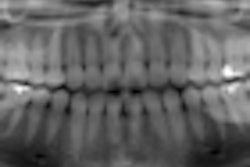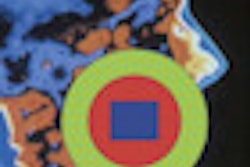The majority of panoramic radiographs taken of young orthodontic patients contain errors, some of which could be important for clinical decision-making, according to a study published online April 21 in the European Journal of Orthodontics.
Researchers from the Sahlgrenska Academy at the University of Gothenburg analyzed 1,287 panoramic radiographs of children and adolescents who had been referred for orthodontic treatment during a one-year period.
Four observers evaluated the radiographs for 10 common errors, pathologies, and/or anomalies. Five of the errors were divided into clinically relevant or not clinically relevant errors; only those pathological findings with a possible influence on orthodontic treatment were compared with the patient's record.
Of the 1,287 radiographs, 96% had errors, the researchers reported. The number of errors in each image varied between one and five, and in 24% of these images "the errors could be of importance for clinical decision-making," wrote Christina Granlund, from the department of oral and maxillofacial radiology, and colleagues. The most common error was that the tongue was not in contact with the hard palate.
Pathologies or anomalies were identified in 558 patients, with a total of 1,221 findings recorded. Findings of possible relevance for orthodontic treatment were 63; of these, only 12 were registered in the patient records.
Pathological findings outside the dental arches were low and could be an argument for minimizing the radiation field, the study authors concluded.



















